Forums
- Forums
- Duggy's Reference Hangar
- USAAF / USN Library
- North American BT-9/14
North American BT-9/14
Post a reply
- Go to Previous topic
- Go to Next topic
- Go to Welcome
- Go to Introduce Yourself
- Go to General Discussion
- Go to Screenshots, Images and Videos
- Go to Off topic
- Go to Works in Progress
- Go to Skinning Tips / Tutorials
- Go to Skin Requests
- Go to IJAAF Library
- Go to Luftwaffe Library
- Go to RAF Library
- Go to USAAF / USN Library
- Go to Misc Library
- Go to The Ops Room
- Go to Made in Germany
- Go to Campaigns and Missions
- Go to Works in Progress
- Go to Juri's Air-Raid Shelter
- Go to Campaigns and Missions
- Go to Works in Progress
- Go to Skinpacks
- Go to External Projects Discussion
- Go to Books & Resources
-
8 years agoWed Jun 14 2023, 08:10pmDuggy
 Main AdminThe North American BT-9 was the United States Army Air Corps (USAAC) designation for a low-wing single piston engine monoplane primary trainer aircraft that served before and during World War II. It was a contemporary of the Kaydet biplane trainer and was used by pilots in Basic Flying Training following their completion of Primary in the Kaydet. The NJ-1, which was similar to the one off BT-10, was used by the United States Navy.
Main AdminThe North American BT-9 was the United States Army Air Corps (USAAC) designation for a low-wing single piston engine monoplane primary trainer aircraft that served before and during World War II. It was a contemporary of the Kaydet biplane trainer and was used by pilots in Basic Flying Training following their completion of Primary in the Kaydet. The NJ-1, which was similar to the one off BT-10, was used by the United States Navy.
Design and development
The BT-9, designated NA-19 by the manufacturer, evolved from the North American NA-16, which first flew in April 1935. The BT-9 design first flew in April 1936.
The wing and tail control surfaces were fabric-covered, as well as the sides of the fuselage from just behind the firewall to the tail. The remainder of the aircraft was metal-covered and featured fixed (non-retractable) landing gear. The Army Air Corps purchased a total of 199 BT-9s, BT-9As and BT-9Bs. Many foreign countries also used variants of this aircraft under North American's NA-16 designation.
The first BT-9C s/n 37-383 was built with a 600 hp Pratt & Whitney R-1340-41, but was otherwise similar to the normal BT-9Cs. It was delivered as the Y1BT-10, and later redesignated BT-10.
The BT-9D was a one off prototype that tested out a number of ideas that went into production as the BT-14 (NA-58), which the similar North American NA-64 Yale represented a major aerodynamic improvement over the NA-16 series, with a longer all-metal fuselage replacing the fabric covered fuselage of the earlier NA-16s. The BT-14 featured a Pratt & Whitney R-985 engine versus the Wright R-975 used on the BT-9. As well as metal skin replacing the fabric on the fuselage, the fin was moved aft slightly, lengthening the rear fuselage while the engine was moved forward to maintain the center of gravity. The rudder was also changed from the rounded shape used previously to one with a roughly triangular shape, with the broadest part being at the bottom, and the canopy was redesigned. The new fuselage would provide the basis for the entire AT-6 family, when fitted with the larger Pratt & Whitney R-1340 engine, a new wing with retractable undercarriage and minor changes for a gunners position.
The BT-9 suffered from stall/spin problems and a variety of fixes were tried. The USAAC temporarily settled on using slats on the later versions of the BT-9. However these did not work well, and the BT-14s longer fuselage and swept forward outer wing panels, unlike the straight trailing edges of the BT-9 helped somewhat.
General characteristics
Crew: two, instructor and student
Length: 28 ft (8.5 m)
Wingspan: 42 ft (12.8 m)
Height: 13 ft 7 in (4.1 m)
Loaded weight: 4,470 lb (2,030 kg)
Powerplant: 1 ? Wright R-975-53, 400 hp (300 kW)
Performance
Maximum speed: 170 mph (273 km/h)
Cruise speed: 146 mph (235 km/h)
Range: 877 mi (1,411 km)
Service ceiling: 19,750 ft (6,020 m)
Below BT-9
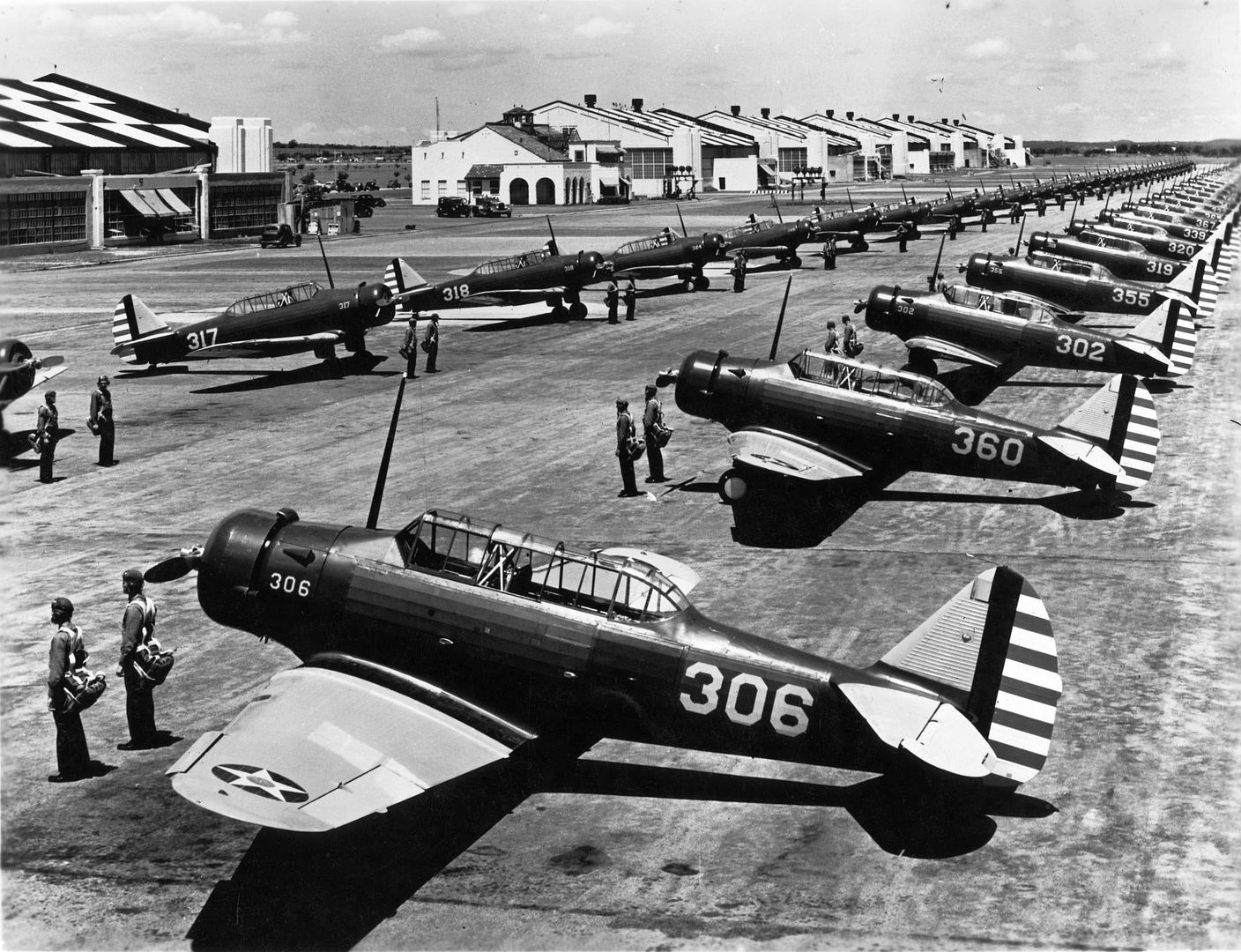
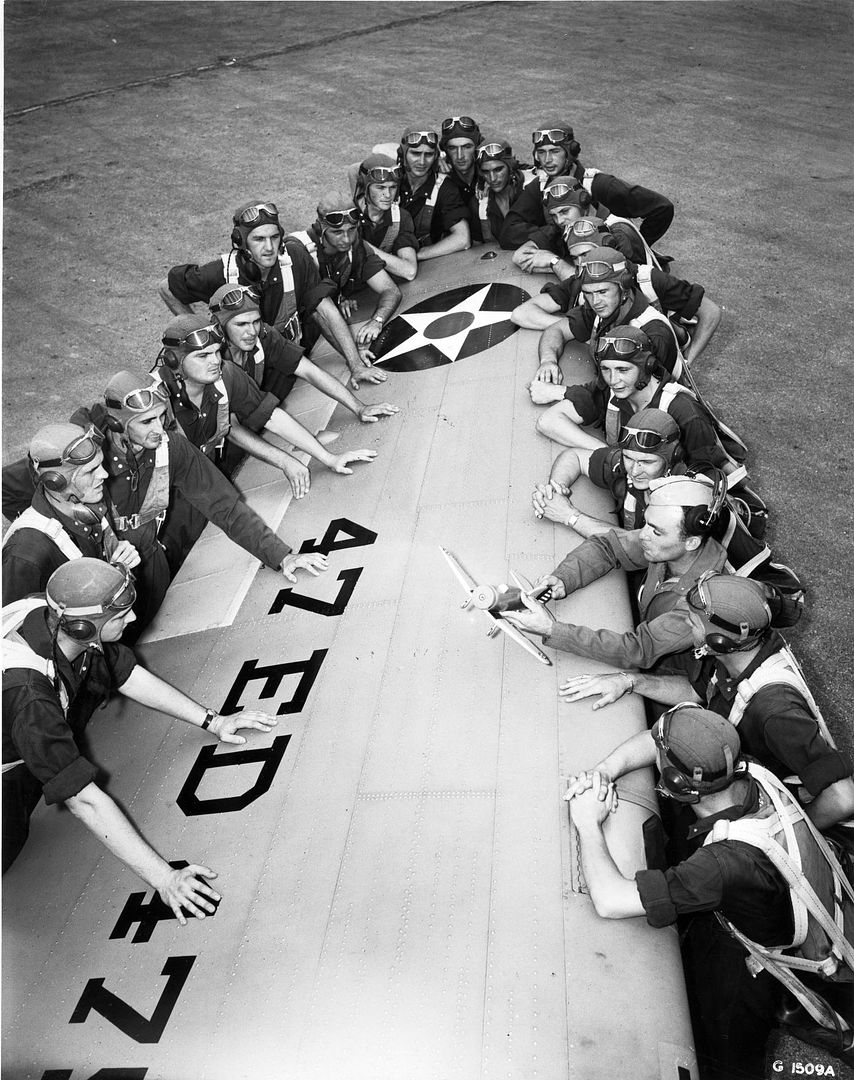
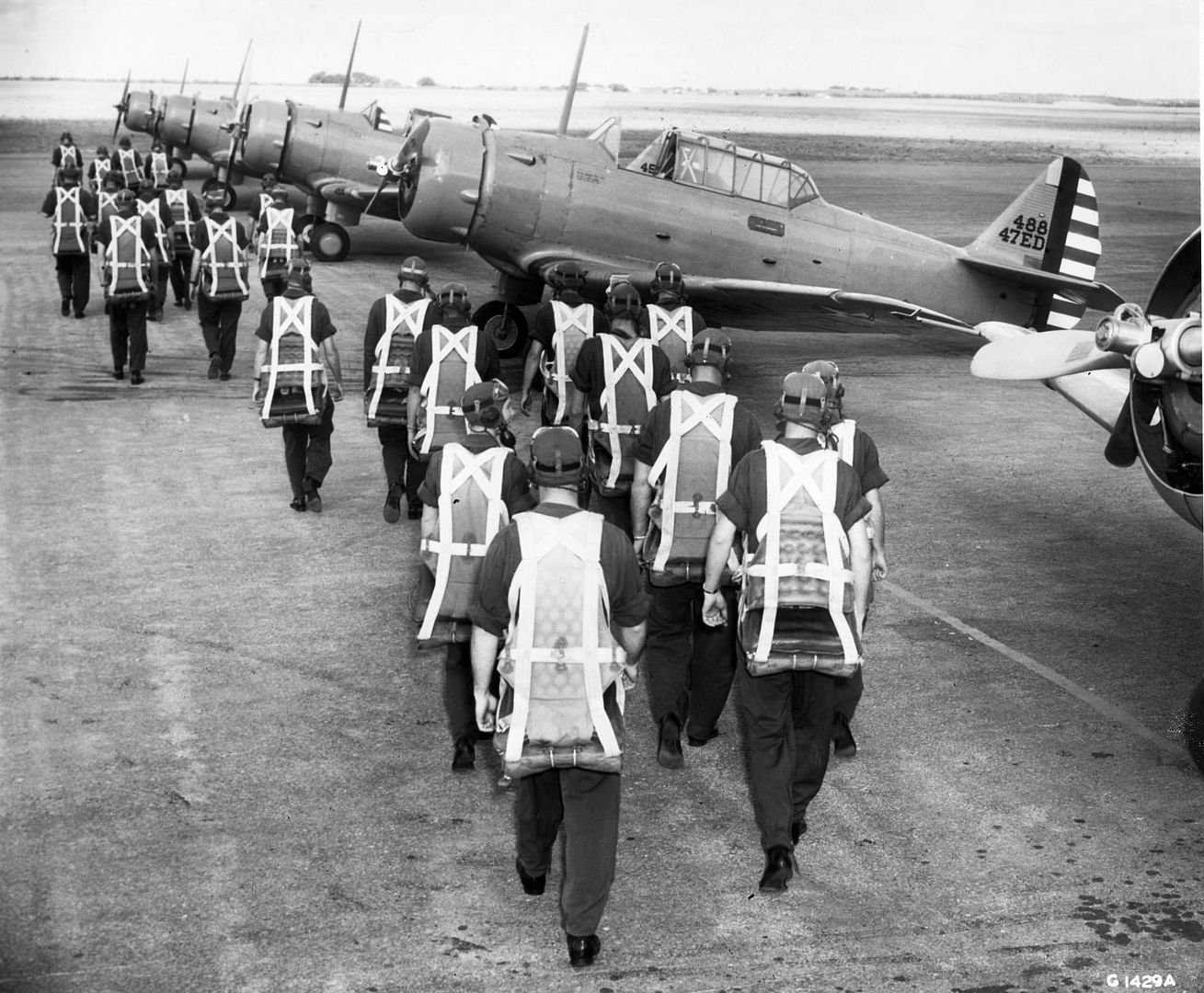

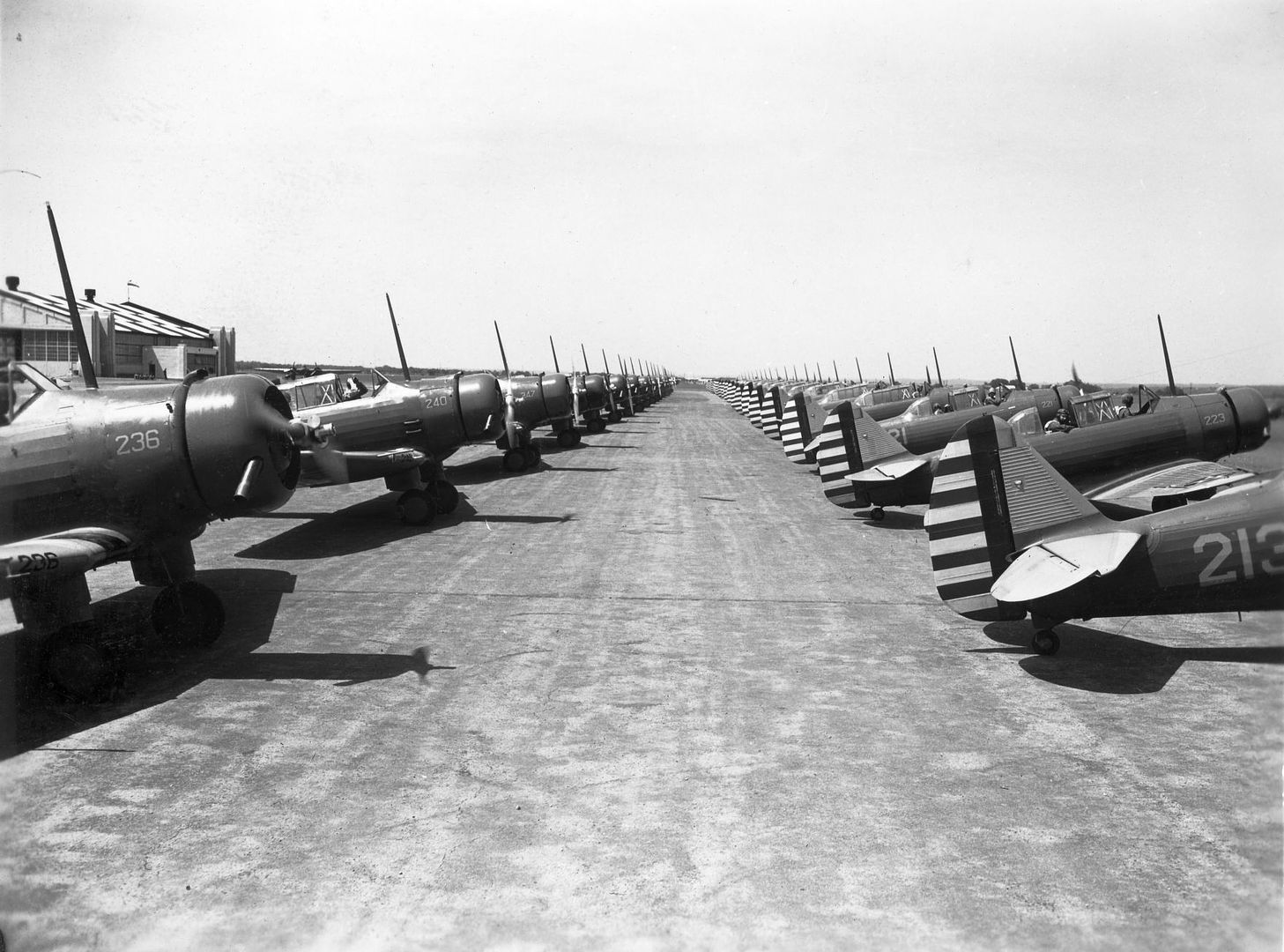
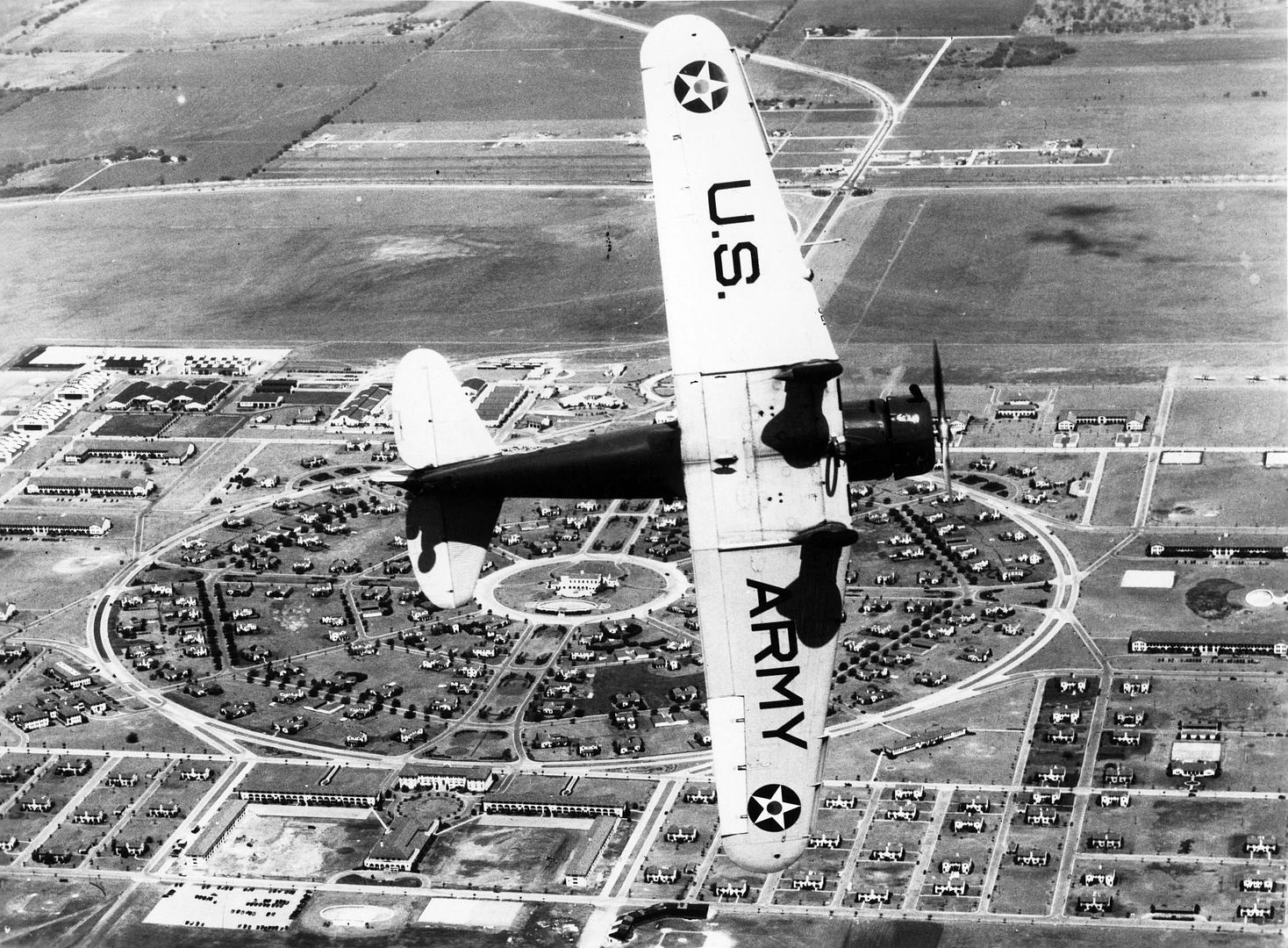
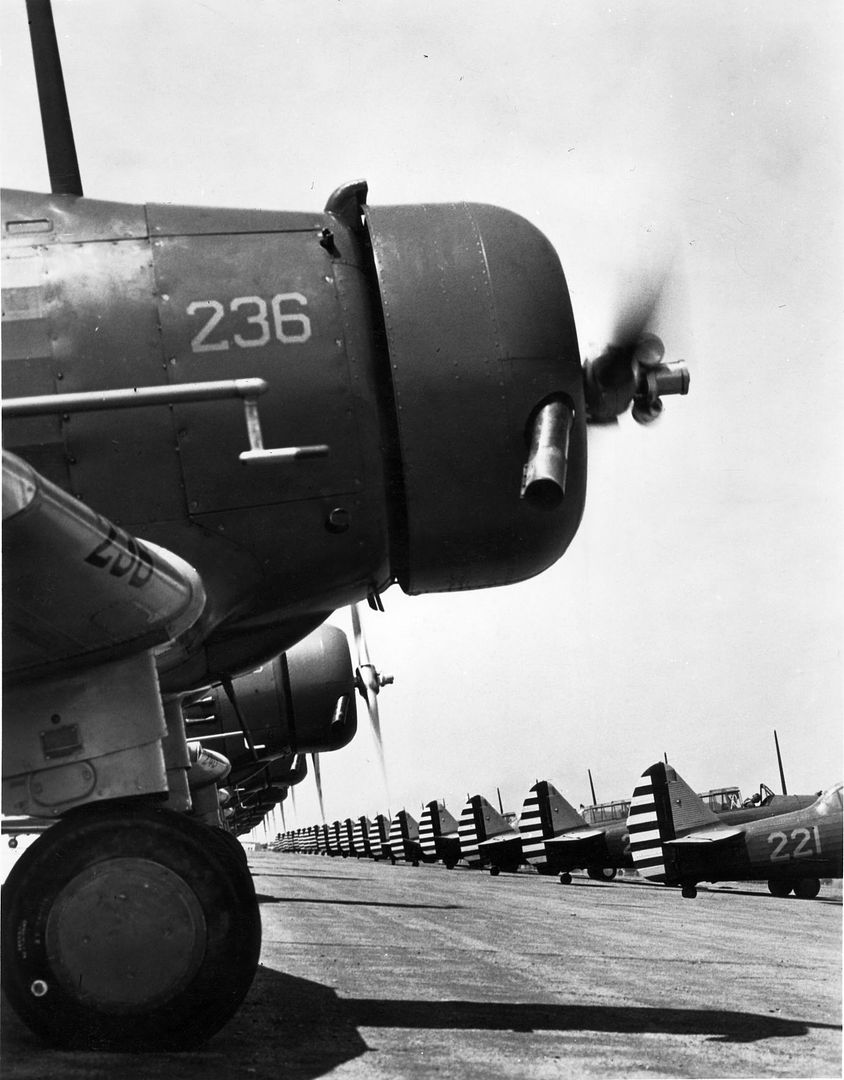
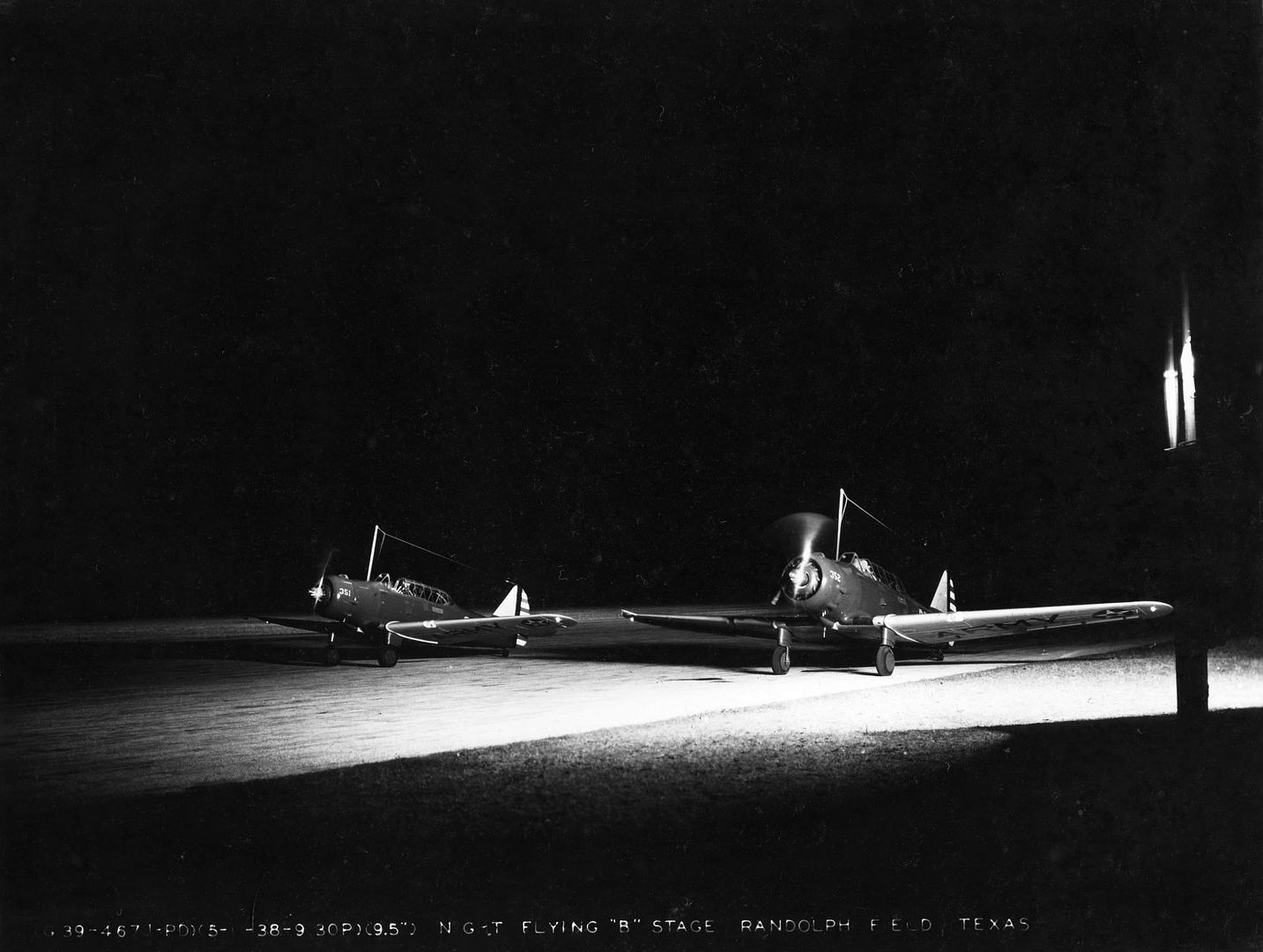


Below BT-14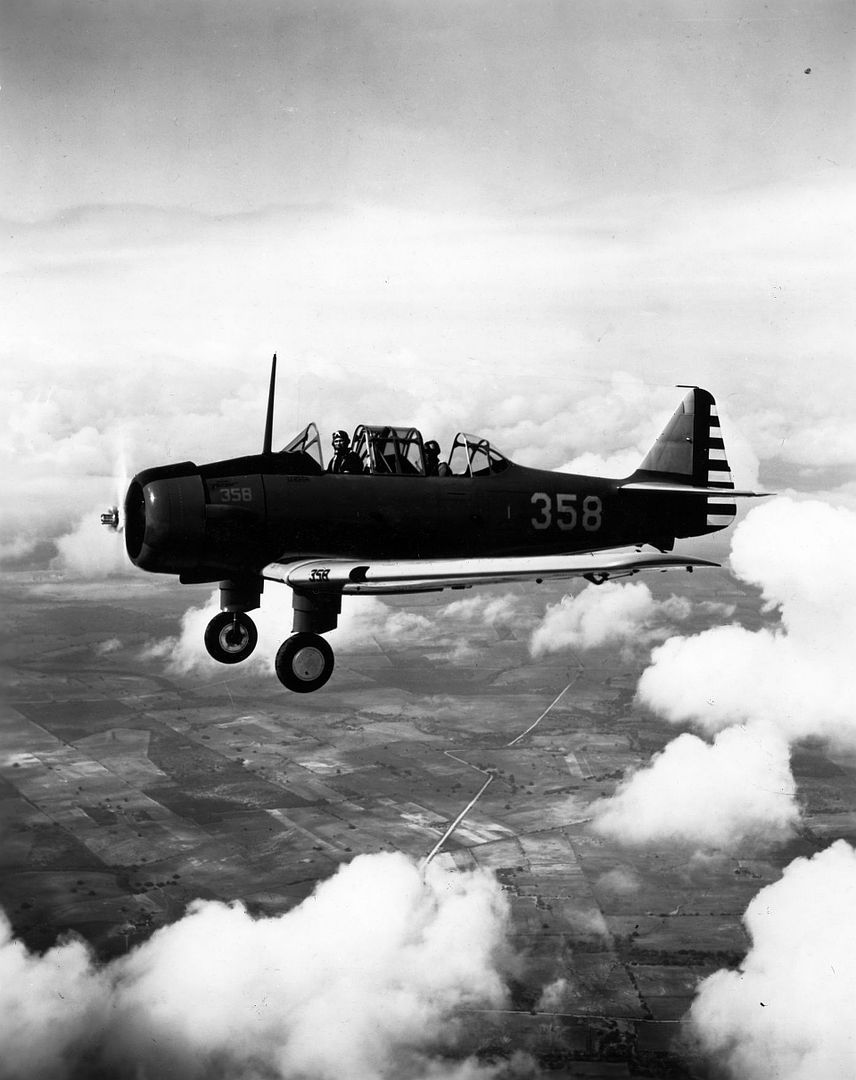
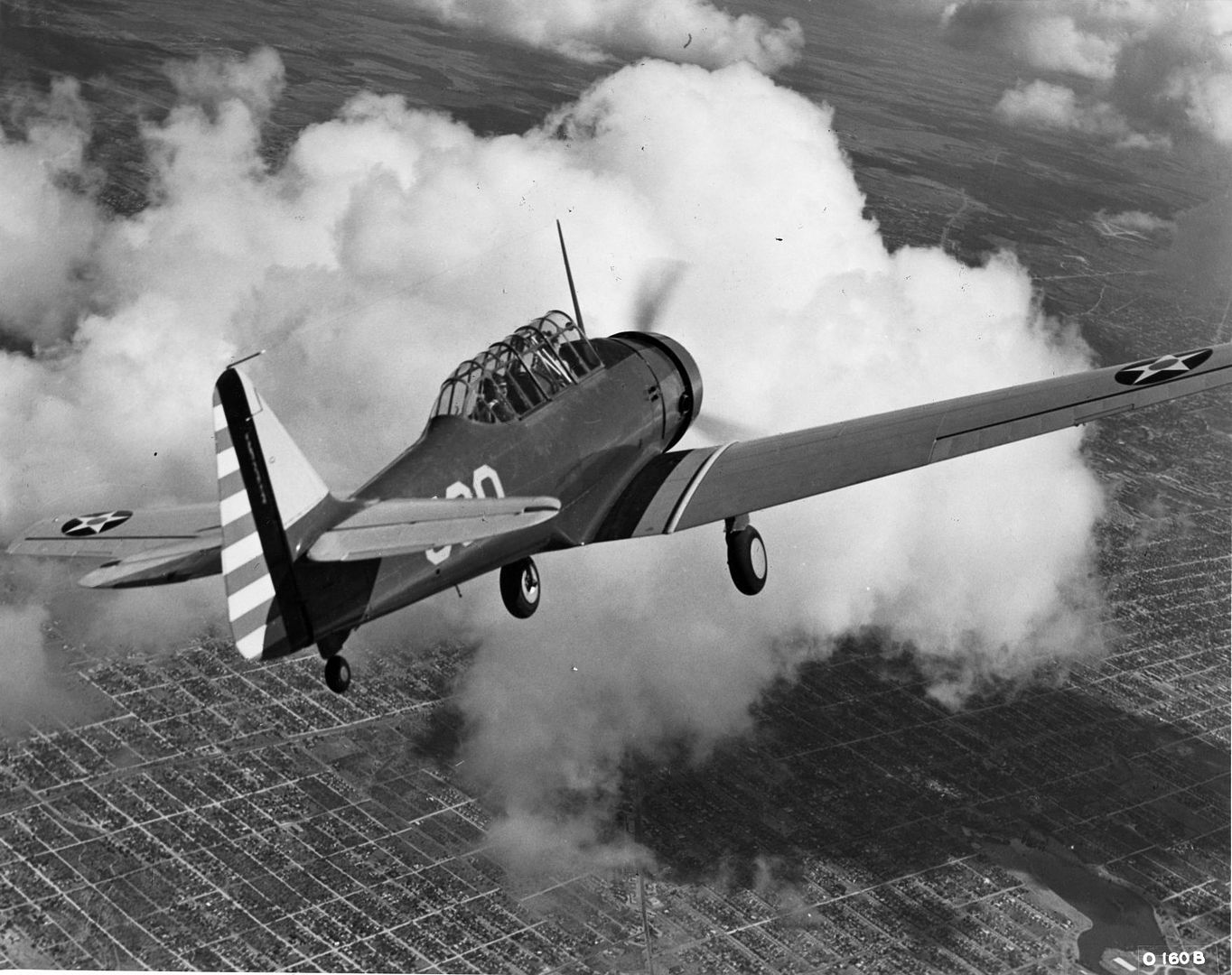
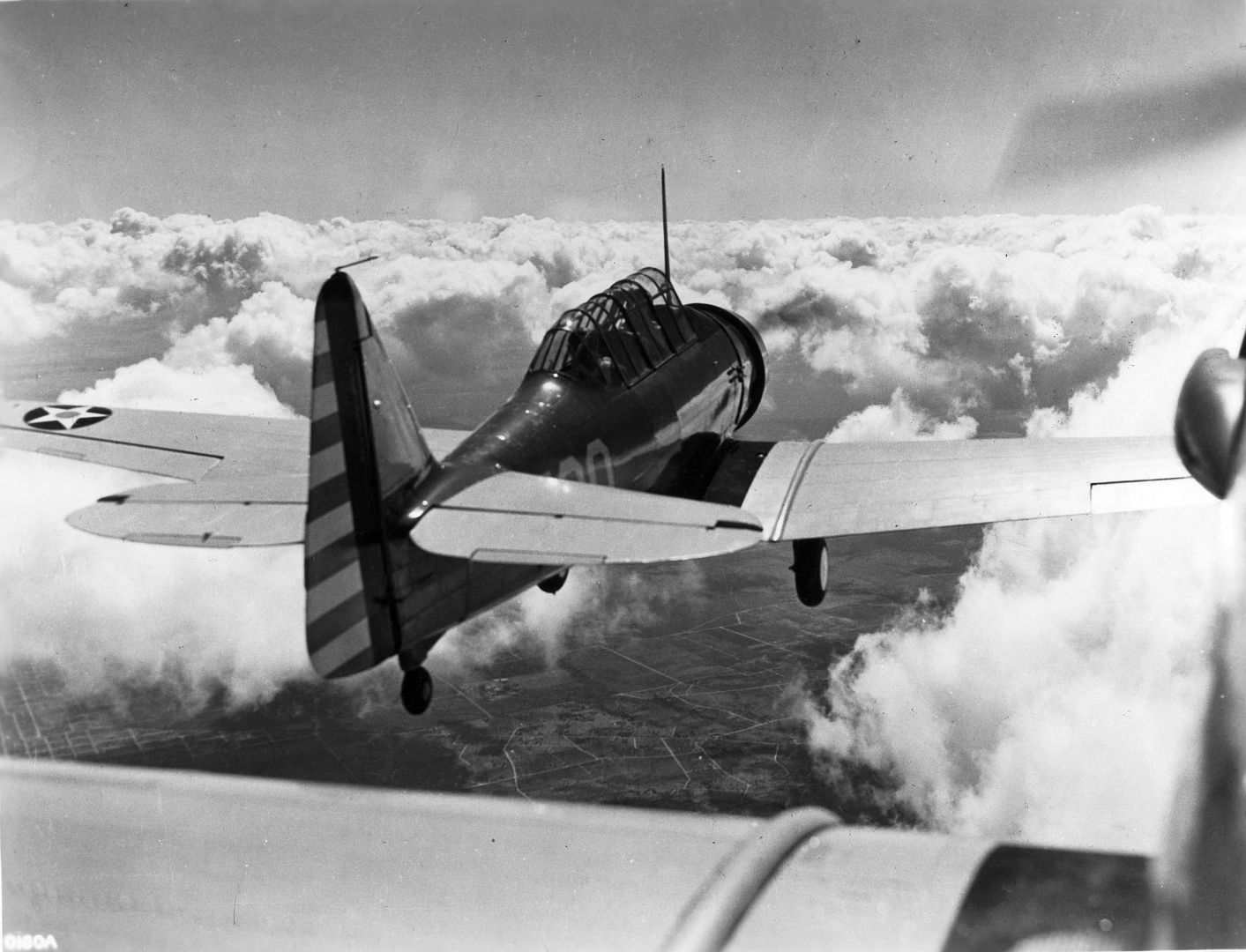
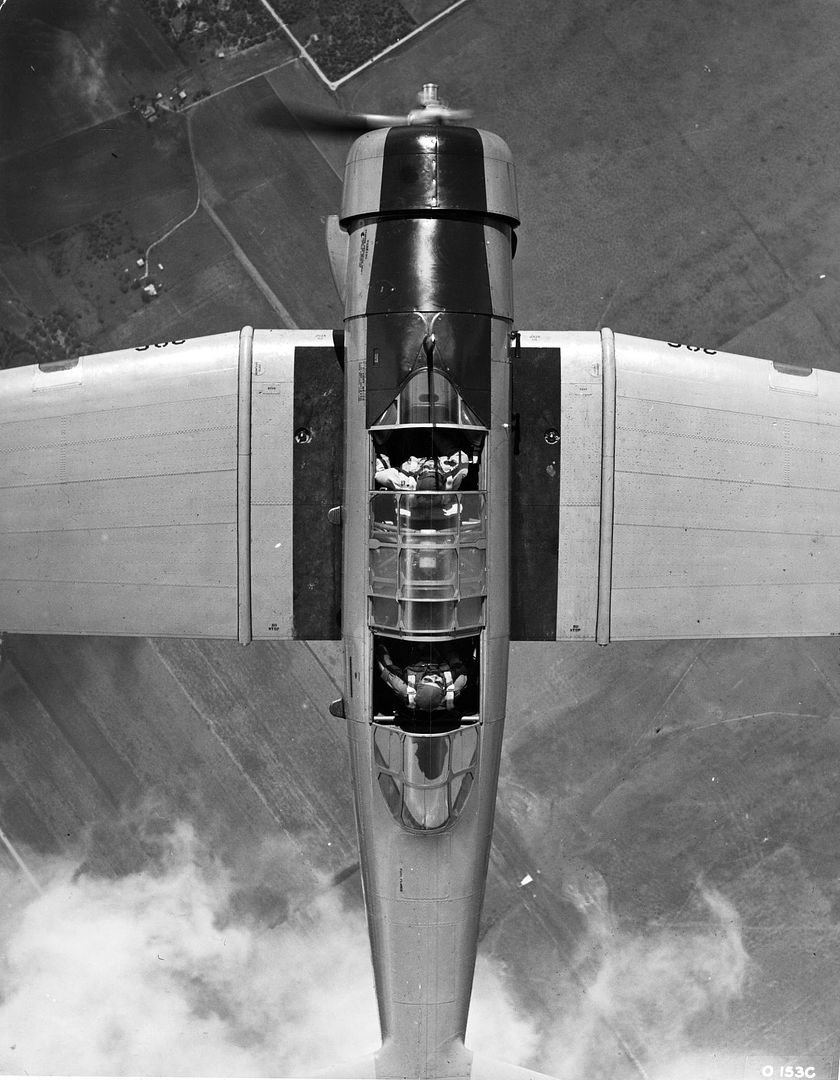
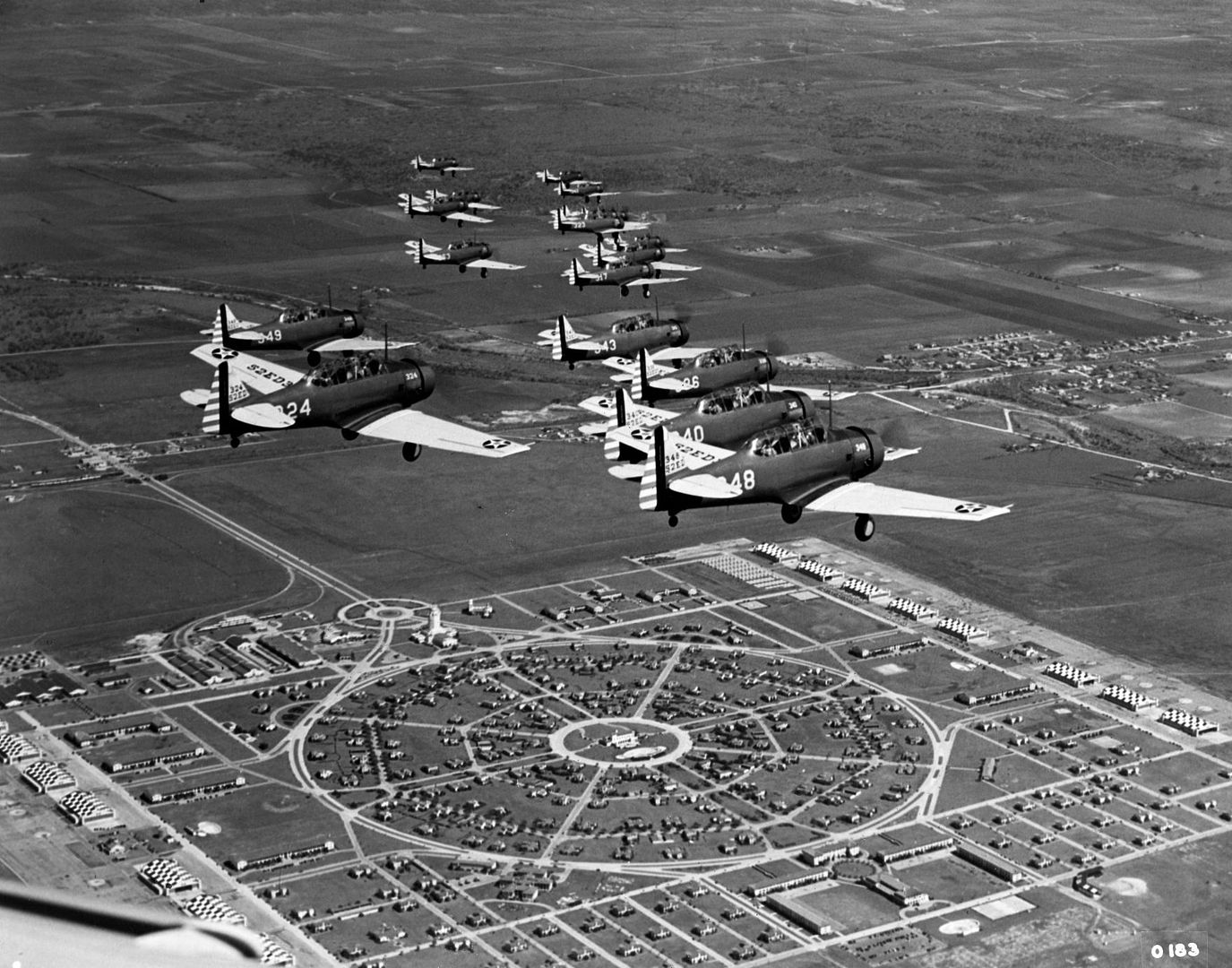
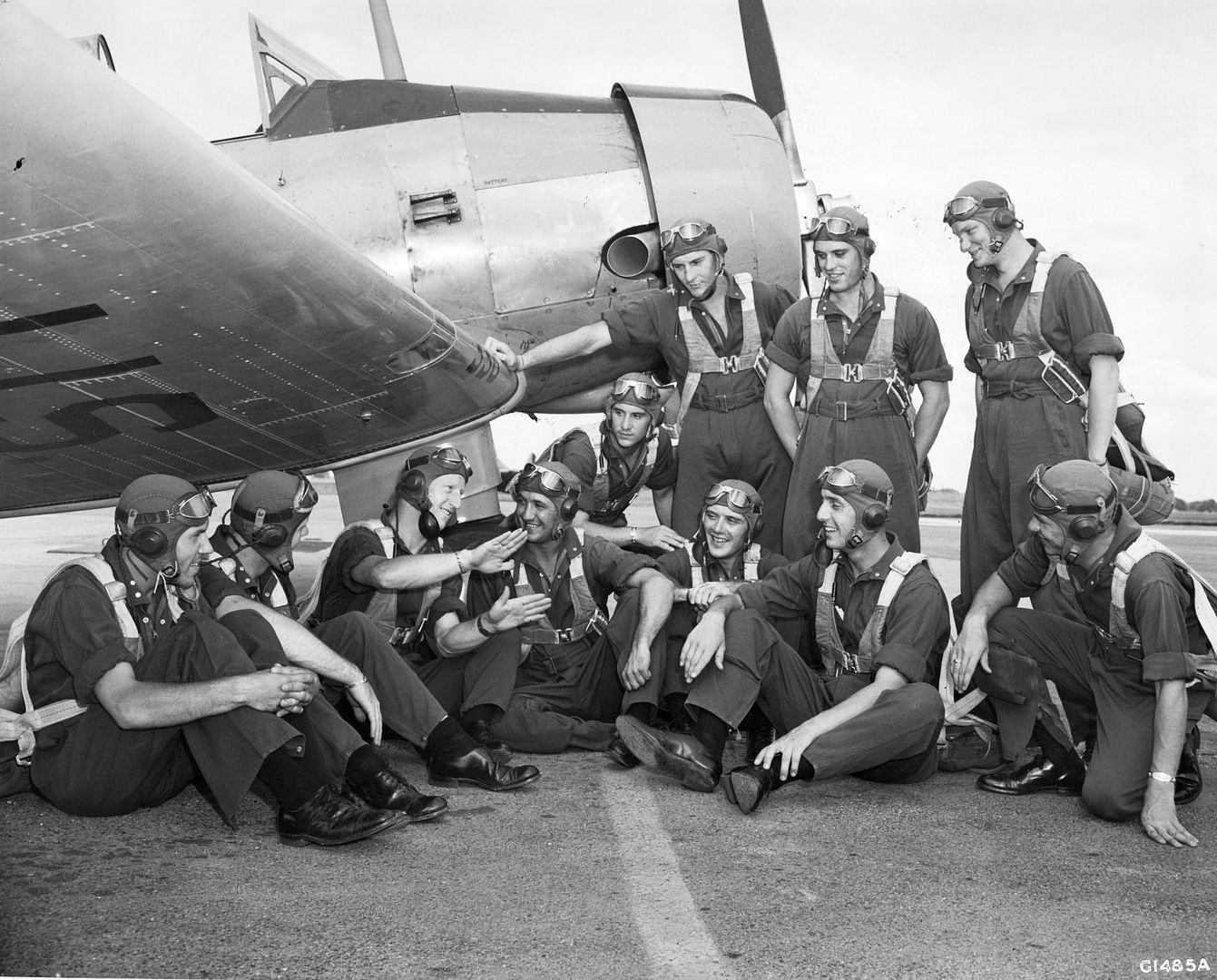
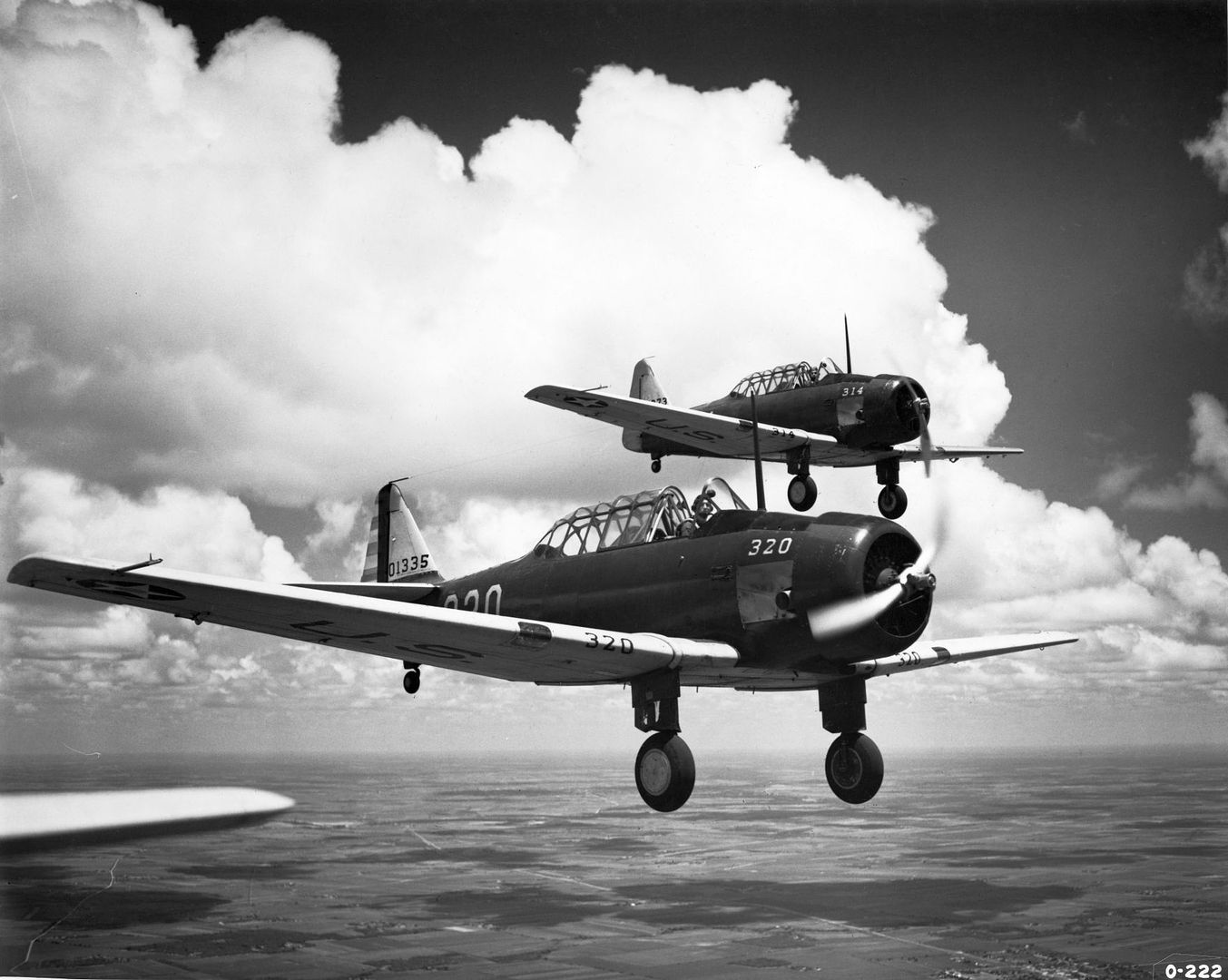
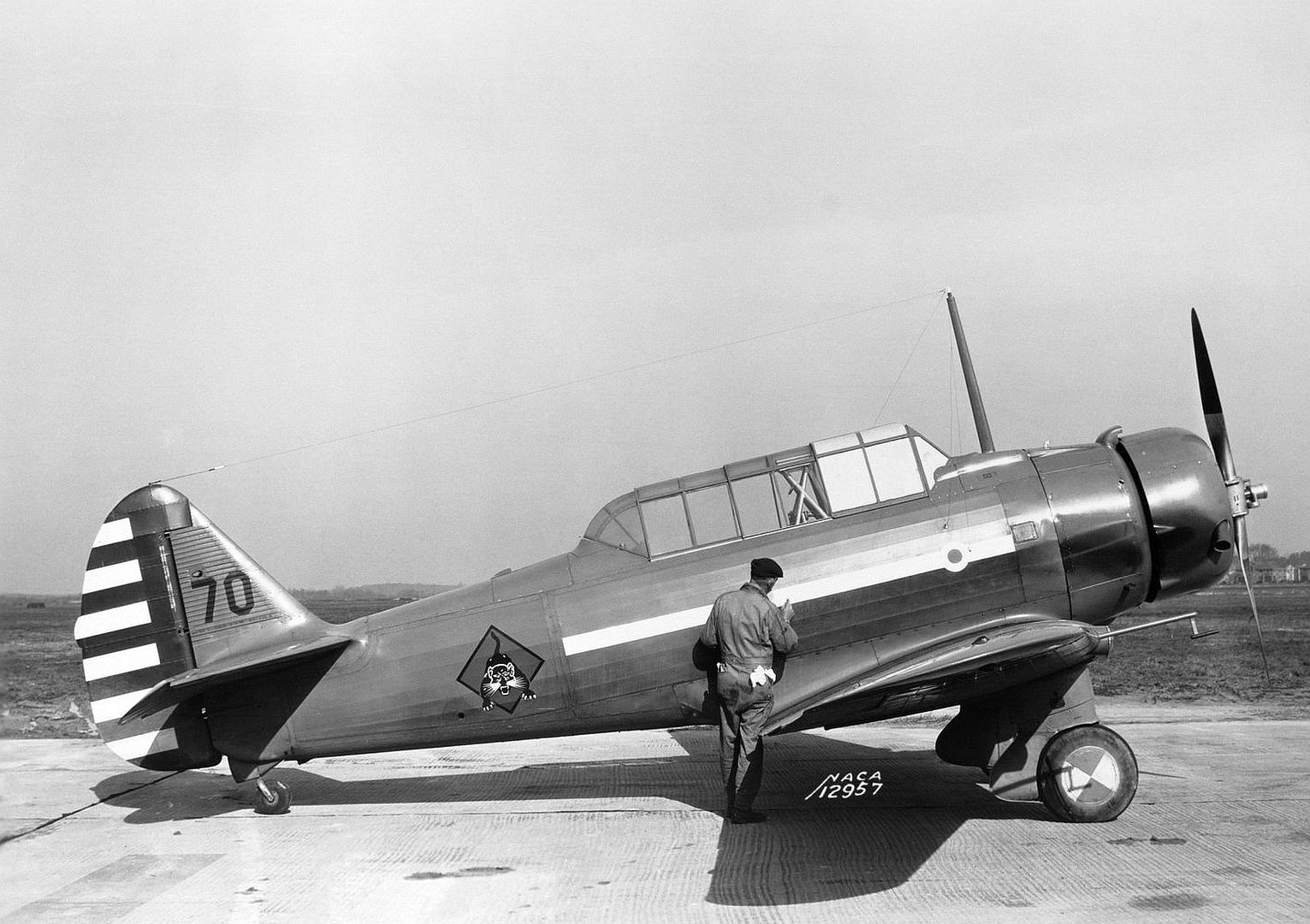
Post a reply
- Go to Previous topic
- Go to Next topic
- Go to Welcome
- Go to Introduce Yourself
- Go to General Discussion
- Go to Screenshots, Images and Videos
- Go to Off topic
- Go to Works in Progress
- Go to Skinning Tips / Tutorials
- Go to Skin Requests
- Go to IJAAF Library
- Go to Luftwaffe Library
- Go to RAF Library
- Go to USAAF / USN Library
- Go to Misc Library
- Go to The Ops Room
- Go to Made in Germany
- Go to Campaigns and Missions
- Go to Works in Progress
- Go to Juri's Air-Raid Shelter
- Go to Campaigns and Missions
- Go to Works in Progress
- Go to Skinpacks
- Go to External Projects Discussion
- Go to Books & Resources
